Chinese Culture >> Chinese Transportation
It is stated by leading
authorities that no form of wheeled vehicle
existed in China prior to the introduction from
Central Asia of the chariot around 1200
b.c. For example,
Stuart Piggott states in his most recent book
that "Shang chariotry appears to mark the first
appearance of any wheeled transport in the area
which was to become the nucleus of Imperial
China." And Edward Shaughnessy declares, "There
is no evidence of any type in China to suggest a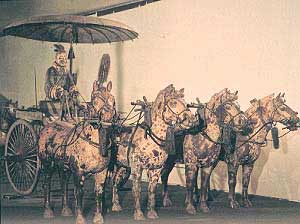 vehicular development leading up to the mature
chariot." Furthermore, Western scholars maintain
that early Bronze Age China only possessed the
borrowed technology of the chariot and never
possessed or invented any other forms of
conveyance or hauling such as carts or
wheelbarrows. For instance, in his recent survey
on the origins of the Chinese chariot, Edward
Shaughnessy declares that in the Shang period,
"there is absolutely no artifactual evidence for
other types of wheeled or tractive conveyance."
vehicular development leading up to the mature
chariot." Furthermore, Western scholars maintain
that early Bronze Age China only possessed the
borrowed technology of the chariot and never
possessed or invented any other forms of
conveyance or hauling such as carts or
wheelbarrows. For instance, in his recent survey
on the origins of the Chinese chariot, Edward
Shaughnessy declares that in the Shang period,
"there is absolutely no artifactual evidence for
other types of wheeled or tractive conveyance."

Rickshaws became a popular hit during the 19th and early 20th century. Rickshaw is a mode of human-powered transport: a runner draws a two-wheeled cart which seats one or two persons. They were later replaced by cycle rickshaws and auto rickshaws.
Motorized
bicycles, motorcycles and other motorized
vehicles are growing in numbers in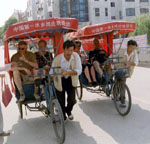 Asian countries. The vehicles come in many
shapes, sizes and forms. You will see some of
the strangest motorized vehicles in both the
cities and the country-side. This is especially
true in the larger cities as affluence grows.
The motorized bicycle is quickly replacing the
bicycle. You can see their growth in numbers
with each visit.
Asian countries. The vehicles come in many
shapes, sizes and forms. You will see some of
the strangest motorized vehicles in both the
cities and the country-side. This is especially
true in the larger cities as affluence grows.
The motorized bicycle is quickly replacing the
bicycle. You can see their growth in numbers
with each visit.
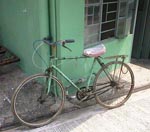
Bicycles, the real traffic jams in major cities in China are caused by the number of bicycles. Besides walking, the main source of transportation is the bicycle. Seldom new and often not pretty, they provide the basic means of transportation to the average person in China to work, shopping and leisure activities.
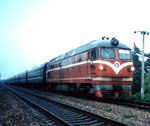
Rail Lines is a popular and effective method of transportation in China. In 1996 there was over 56,700 kilometers of rail line. Trains are a major means of transportation between cities in China, and connect virtually every part of the country. Trains are a key method of transportation between cities.
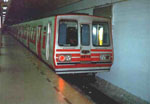 Subways
and subway systems exist only in the major
cities. They are insufficient for the population
to take significant advantage. Inadequate subway
systems is a major issue to the growth and
health of these cities. Shanghai is a good
example, where traffic congestion, air pollution
from factories and a growing number of motorized
vehicles is already a problem .
Subways
and subway systems exist only in the major
cities. They are insufficient for the population
to take significant advantage. Inadequate subway
systems is a major issue to the growth and
health of these cities. Shanghai is a good
example, where traffic congestion, air pollution
from factories and a growing number of motorized
vehicles is already a problem .
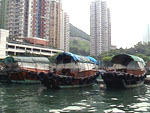
Waterways are and always have been an important way of moving goods through the country. The Pearl river delta is a prime river system for the movement of goods and people. The system is filled with an boats, from barges to sampans to small fishing boats, to barges and hovercraft. Product moving to and from Hong Kong will be found on boats for some portion of it's journey. Even today you will see a wide array of boats on the various river systems. Sampans, long famous boats in China, are still seen in Hong Kong Harbor and on the waters around China. Barges of all types, laden with goods and materials as well as soil and rocks for many of China's development projects can be seen floating upon the waters.
Lastly, automobiles have become the hottest method of transportation in China today. With a country of more than 1 billion people strong, we can only imagine the impact of automobiles in China will have on everyone in the world. Influencing the influx of car buying, Chinese people are getting wealthier each day and more disposable income to utilize. Automobile is a necessity in Chinese culture today.
